🟢 External use (paw care, wounds, etc.)
Purpose: To help reduce inflammation and promote healing.
Instructions for use:
Prepare a dough in a (non-metallic) dish with water and green clay. The ideal dough texture, for this case, is rather thick but malleable.
Application :
On the paws in case of mange, irritations or injuries.
For superficial or deeper wounds: If you can, clean it with saline water (formula: 2 teaspoons of table salt and 500ml of water), then apply the paste and let it air dry. This will also protect the wound from flies and especially from their relatives. Make sure that other chickens do not attack the wound; you will have to isolate it.
Frequency: Once a day until improvement.
- To have on hand to use its hemostatic power
On the other hand, if you do not even have the time or possibility to clean the wound, the first action to take is to spray EXTERNAL Clay on the wound directly.
- This will help stop the bleeding
- This will already protect the wound
- Clay is antiseptic, antibacterial, and antifungal. It won't cause infection and will give you time to plan for your next treatment.
- Ideal for scratches, bites, nail or beak clipping, and dewclaw injuries.
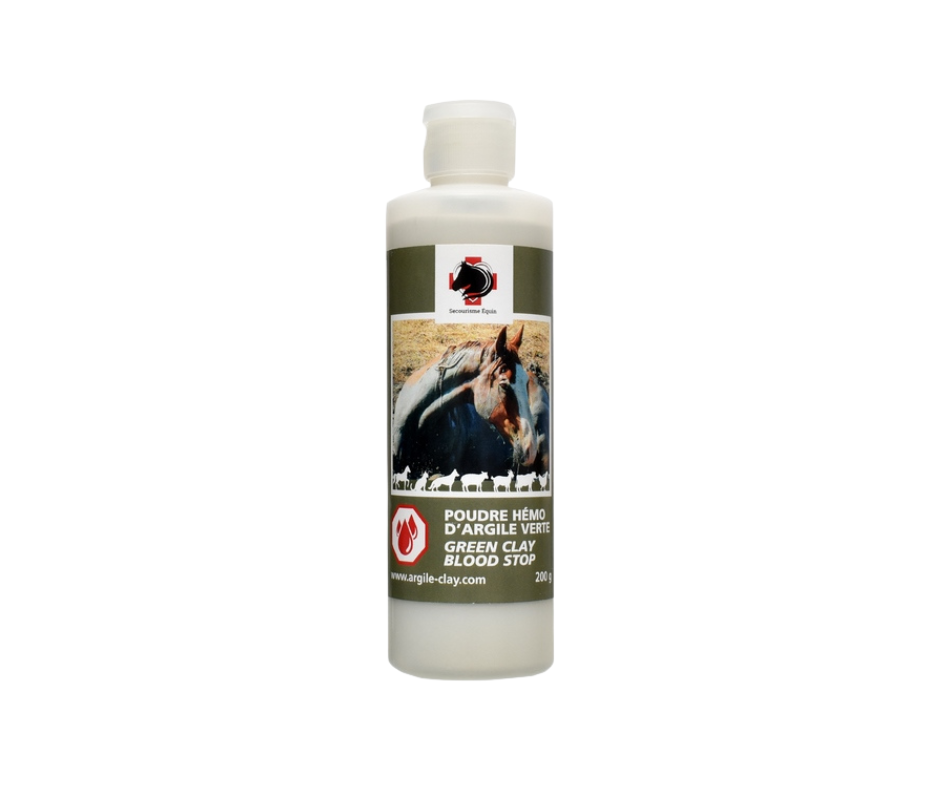
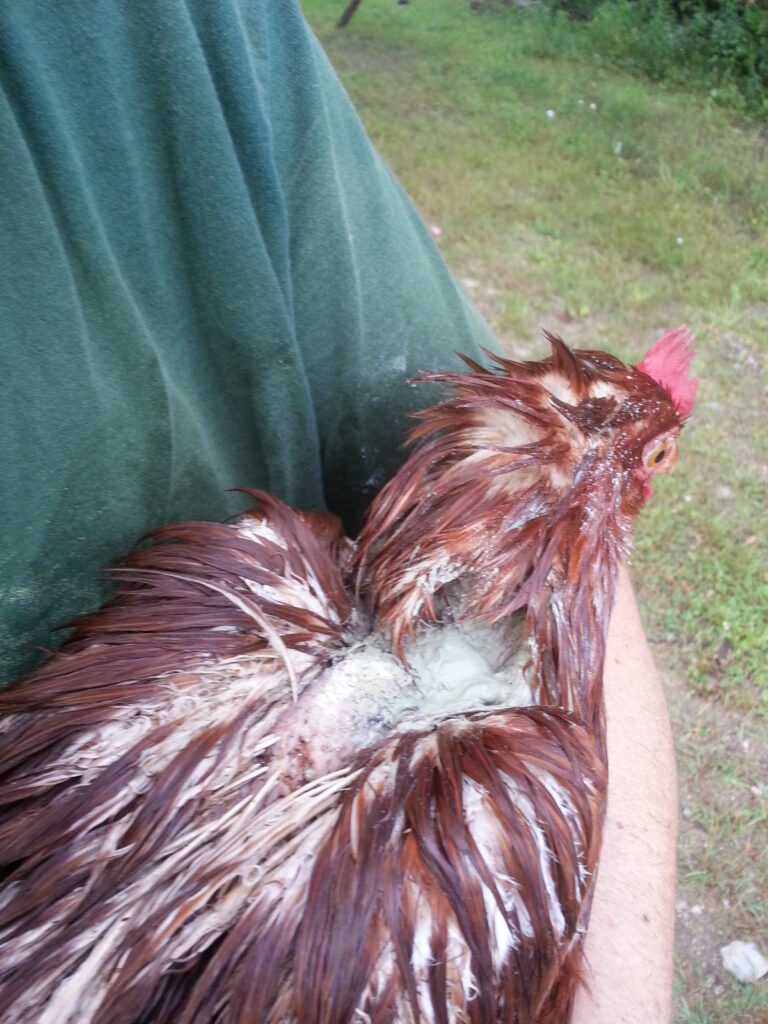
Let me tell you about one of my chickens that my dog played with a little too roughly...
He had bitten him, I always hoped by mistake... quite hard on the back.
I could see her heart beating through that wound. Ish! Poor little thing!
I didn't dare clean it, it seemed so deep, so I put a small handful of clay in the hole.
The following days I just rinsed with water and added more powdered green clay.
My beautiful hen survived and continued to lay good eggs for me!
Pecking in chickens: a disorder not to be neglected
I peck you, you peck me, we peck each other... A chicken's beak is formidable, and when pecking starts, it can turn into a tragedy!
What is pecking?
This is an abnormal behavior in which chickens pluck the feathers of their fellow chickens, sometimes seriously injuring them, attracted by the blood. In extreme cases, this can lead to mutilation.
Why does this happen?
Introduction of new hens: this disrupts the hierarchy.
Nutritional deficiencies (proteins, vitamins, minerals).
Stressful living conditions: overcrowding, lack of light, prolonged confinement.
How to avoid it?
Introduce several new hens gently.
Provide space, access to the outdoors, or games to prevent boredom.
Provide a complete and balanced diet (pellets, dried insects, supplements). Regularly add internal clay to the feed and your dealer will be able to advise you.
Avoid sudden dietary changes.
What to do in case of pecking?
Discreetly observe behaviors to identify the dominant or the victim.
Temporarily isolate the injured (or “biting”) hen.
Treat wounds and use repellents such as Green Clay Hemo Powder.

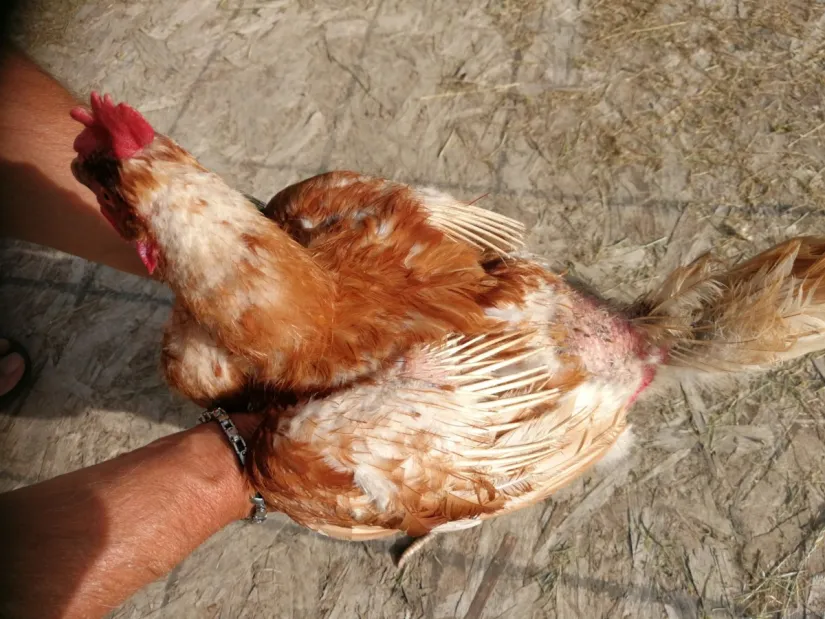
⚠️ External Clay Precautions
Always use natural, untreated clay with no additives. Ready-made clay in jars often contains additives. This green clay is ultra-ventilated, making it the highest quality available.
Do not use metal to handle clay (alters its properties because clay contains ions).
Don't worry, you can't do any harm with this 100% natural product.
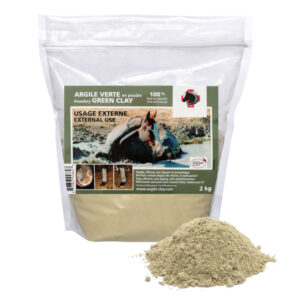

🟢 Internal use (orally in water or food)
Purpose: Helps improve digestion, reduce diarrhea, strengthen the immune system, control intestinal worms and coccidiosis, absorbs toxins, thus cleansing and regenerating the body.
Instructions for use:
This green clay has all the properties and certifications required for use in food. Furthermore, unlike other products, it contains no quartz or sand.
Dosage: approximately 1 to 2% of the weight of the feed, or approximately 10 to 20 g per kg of feed.
Method :
Mix directly into the feed
Or dilute in drinking water (1 tablespoon per liter of water), change every day or several times a day depending on the temperature and the number of animals of course. Contrary to popular belief, chickens drink a lot and like all animals need fresh water.
Duration: First annual treatment = 21 days then a treatment of 7 to 10 days, renewable once a month or as needed. See an example of a treatment plan to download below
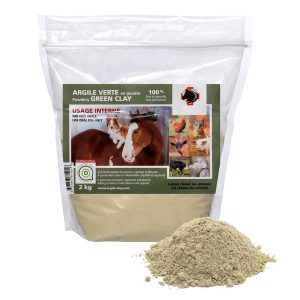
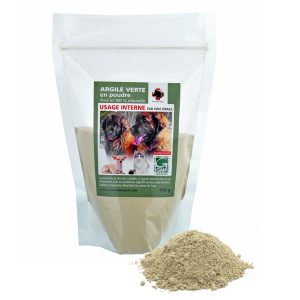
⚠️ Internal Clay Precautions (oral use)
- Do not give continuously without a break: this could harm the absorption of certain nutrients in the long term.
📌 Bonus tips:
For chicks: reduce the dosage (0.5 to 1%).
For layers: clay = better intestinal condition = more regular laying.
Never give as a continuous treatment: take breaks between treatments.

